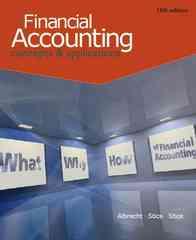Deferred Taxes
Comprehensive Deferred Tax Problem Jones Co. began operations on January 1, 2009, at which time they purchased an asset for $200,000. The asset had an expected useful life of 8 years and a salvage value of $0. Below is information regarding Jones' income (or loss) for 2009 and 2010, along with information regarding differences between financial and taxable income. 2009 Financial income before taxes was $50,000. Jones depreciates the asset purchased on January 1, 2009 using the MACRS method with a 5 year life classification, for tax purposes. They use straight line, with an 8 year life, for financial purposes (MACRS rates are: 20%, 32%, 19.2%, 11.52%, 11.52%, 5.76%). On October 1, 2009, Jones collected $12,000 rent ($1,000 per month), in advance, on its excess office space (i.e. Jones is renting out some space that they do not currently need), crediting Unearned Rent for the $12,000. Jones sells a product that carries a two year warranty. During 2009 estimated warranty expense was $20,000 and cash outlays to repair products under warranty were $7,000. The remaining $13,000 of warranty work is expected to occur in 2010. Interest earned on tax free municipal bonds was $4,000. The 2009 tax rate is 30% and is expected to remain at 30% indefinitely. 2010 Financial loss before taxes $175,000. Depreciation on the machine purchased in 2009 was recorded. Jones earned the remainder of the $12,000 prepaid rent collected in 2009 and, on October 1, 2010, collected another year's rent of $12,000 in advance. Estimated warranty expense for 2010 was $25,000 and cash outlays were $23,000 (the remaining $13,000 from 2009 estimates and $10,000 from 2010). The remainder of the 2010 warranty work is expected to occur in 2011. Interest earned on tax free municipal bonds was $6,000. During 2010, a new tax law increased rates to 32% for 2010 -2012, and to 34% for all years after 2012. Additionally: Whenever possible, Jones carries net operating losses back. Due to changes in the economy and increased competition, Jones does not expect to report taxable income in the next 7-8 years. In anticipation that not all of the 2010 loss carryforward will ever reverse, Jones sets up a valuation allowance equal to 40% of the loss-related deferred tax asset. REQUIREMENTS 1) Compute taxable income (loss) for 2009 and 2010. 2) Prepare journal entries to record 2009 and 2010 tax expense (benefit). Use separate accounts for each DTA and DTL. 3) Indicate the amounts and classification of the deferred tax items on the 2009 and 2010 balance sheets. 4) Present the income statement disclosure for 2009 & 2010tax expense, beginning with the line 'Income (Loss) before Tax' and ending with 'Net Income'. Check figures: 2009 - Income tax expense = $13,800; 2010 - Income Tax Benefit = $36,819







